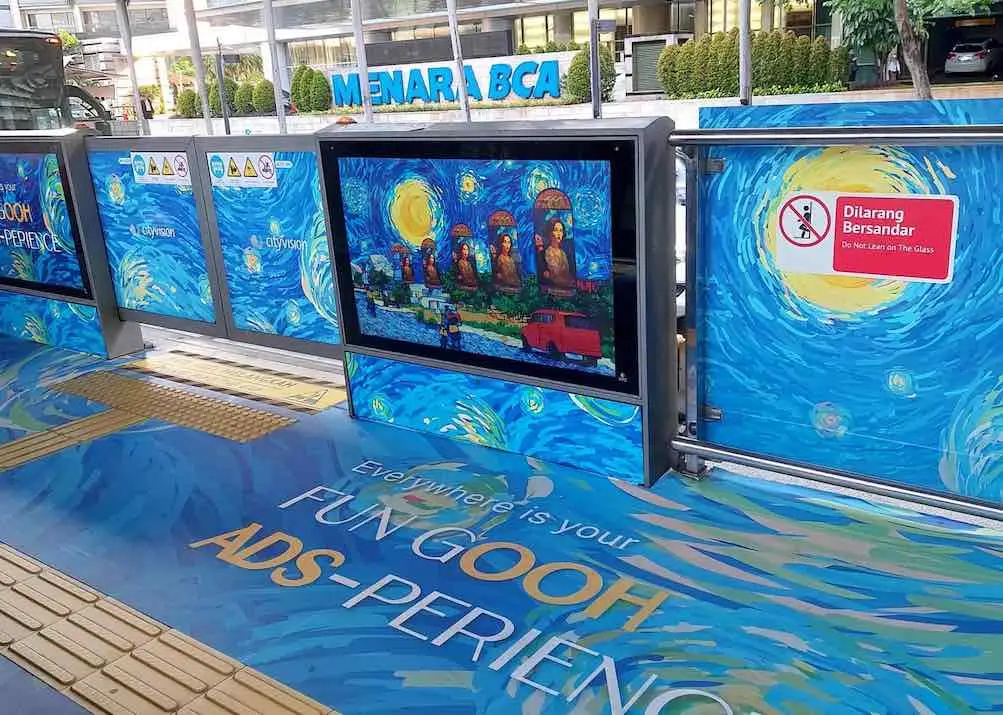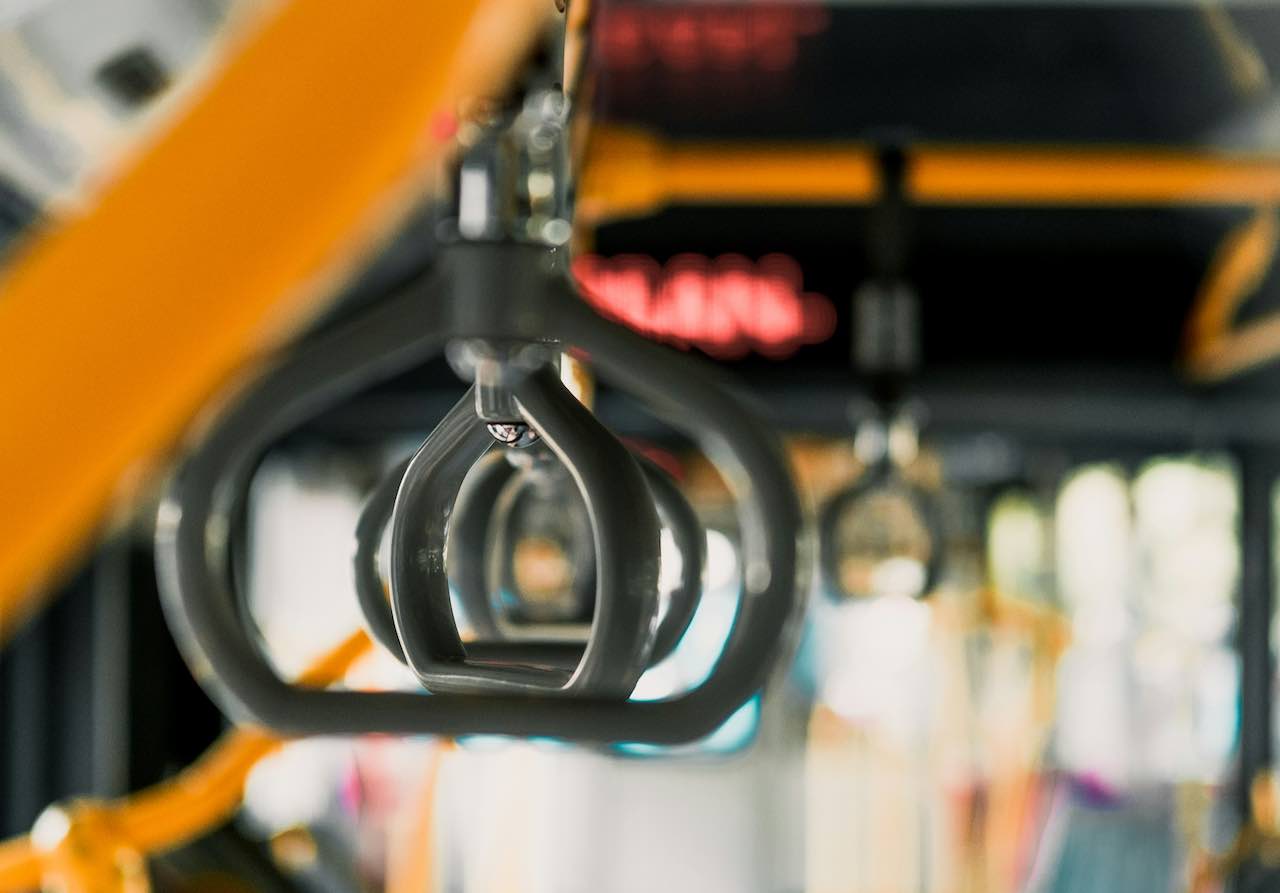
Saturday, 19 Oct 2024

Advertising products or services in out-of-home (OOH) media in Indonesia is growing in popularity, especially in Jakarta, where public transportation options like Transjakarta buses are widely available. As a mobile medium that reaches diverse locations and a broad target audience, advertising on Transjakarta buses has proven effective in boosting brand awareness and extending marketing reach. However, many marketers wonder: how can we accurately measure the success of a Transjakarta bus advertising campaign? This article discusses key metrics for evaluating ad effectiveness, tips for maximizing campaigns, and the benefits of Transjakarta advertising for businesses.
Transjakarta is one of the main public transportation options used by millions of people in Jakarta daily. Its extensive reach covers many areas of the capital, serving a diverse demographic. Therefore, advertising on Transjakarta buses has several main advantages:
1. High Visibility
Bus advertisements are visible to passengers, pedestrians, and other road users along the routes.
2. Wide Audience Reach
With multiple routes and a diverse passenger base, the ads can reach a broad target audience.
3. Frequent Exposure Effect
Buses that operate consistently allow advertisements to be seen repeatedly by the same audience.
To evaluate the effectiveness of a Transjakarta bus ad campaign, there are several important metrics to consider:
1. Ad Reach and Frequency
Reach: How large is the audience viewing the ad? Transjakarta covers many areas in Jakarta, so estimating the geographical reach of the ad helps to understand potential exposure.
Frequency: How often does the same audience see the ad? High frequency increases brand awareness likelihood.
2. Brand Recall Rate
Brand recall indicates how well the audience remembers your brand after seeing the ad. To measure brand recall, you can conduct post-campaign surveys among potential customers or use platforms that track brand recall.
3. Social Media Engagement
If your ad includes a digital element, such as a QR code or an invitation to follow social media, you can measure campaign success through increased engagement on social media. The number of visits, comments, and interactions with content inspired by the campaign can be a success indicator.
4. Website Visits and Conversion
Adding a unique link or promo code to Transjakarta ads can help you track website visits and conversion rates generated by the ad. Use Google Analytics or other analytic tools to see how effectively your ad drives audience traffic to your website.
5. ROI (Return on Investment)
ROI is an essential metric that measures how effectively the ad budget is used. Calculate ROI by comparing the campaign’s profit with the total Transjakarta advertising cost.
1. Attractive Design
Ensure the ad design is captivating and recognizable in a short amount of time. Using bold colors and clear, concise messaging will attract attention.
2. Optimal Placement
Ensure the ad is placed in an easy-to-view area, such as on the side or back of the bus.
3. Integration with Digital Campaigns
Add QR codes or links that direct the audience to a digital campaign. This helps increase engagement and enables you to track online success.
4. Creative Content
The more unique and creative the content, the higher the likelihood that the audience will remember your brand. Consider using themes or visuals that resonate with Jakarta's culture and daily life.
Besides delivering short-term results, Transjakarta bus ads also have long-term effects. Some of these are:
Measuring the success of a Transjakarta bus ad campaign requires an in-depth understanding of the audience, as well as the use of appropriate metrics and tracking tools. By choosing the right strategy, attractive design, and leveraging digital platforms to monitor and boost engagement, advertising on Transjakarta buses can be a highly profitable investment for businesses. Use creative and innovative approaches, and make Transjakarta a powerful out-of-home medium to introduce your brand to Jakarta's community.

Lestari Ads Agency - PT Lestari Dev Solusindo
Lestari Ads Agency is a leading out-of-home media company with the largest network in Indonesia. Lestari Ads Agency aims to create an inspiring journey by building the most effective, accessible and innovative data and advertising ecosystem, thus revolutionizing the way companies connect with their audiences. Lestari Ads has brightened up Indonesia's main streets and points of interest with LED Digital, traditional and iconic high-quality transit ads. We focus on providing impactful, innovative, effective and accessible advertising space.
The most trusted OOH advertising agency in Indonesia
Experience the top of visibility with Indonesia's leading out-of-home (OOH) advertising agency. We specialize in turning the urban landscape into a dynamic canvas for your brand, crafting compelling narratives that capture the imagination of millions. Our mastery over strategic placements and innovative formats ensures your message not only reaches, but resonates with a diverse and expansive audience. With a proven track record of delivering high-impact campaigns across Indonesia's bustling cities and beyond, we redefine what's possible in OOH advertising.
Find the best quality billboard advertising space with variety of size and dimension
out-of-home advertising, digital billboards, traditional billboards, transit advertising, street furniture advertising, outdoor signage, digital ooh, led billboards, static billboards, large format advertising, advertising displays, ooh media, advertising billboards, outdoor digital screens, urban advertising, roadside billboards, digital signage, retail advertising, poster advertising, mobile billboard advertising, digital transit ads, interactive ooh, airport advertising, mall advertising, cinema advertising, sports venue advertising, digital outdoor advertising, public transportation ads, taxi advertising, bus shelter ads, pedestrian advertising, advertising kiosks, outdoor media solutions, billboard marketing, ooh advertising strategies, ooh media planning, digital billboard solutions, smart billboard advertising, contextual ooh ads, geotargeted ooh ads, location-based ooh, smart outdoor ads, programmatic ooh, data-driven ooh, brand awareness billboards, large-scale ooh campaigns, outdoor advertising effectiveness, billboard design, high-traffic billboard locations, hyperlocal ooh, street-level ooh, public transit advertising, ooh campaign management, outdoor digital displays, media buyers ooh, roadside digital ads, metro station advertising, shopping center ads, ooh advertising trends, outdoor media buying, bus wrap advertising, illuminated billboards, building wrap advertising, branded outdoor advertising, billboard networks, freeway advertising, expressway billboards, train station advertising, out-of-home advertising campaigns, event-based ooh ads, ooh media buying strategies, proximity-based ooh, national ooh campaigns, city-wide ooh advertising, large-scale outdoor campaigns, integrated ooh solutions, ooh digital networks, smart city advertising, mobile billboard solutions, dynamic outdoor ads, highway billboard advertising, ooh media optimization, digital out-of-home screens, high-impact ooh ads, retail digital signage, interactive billboard advertising, regional ooh advertising, local outdoor advertising, consumer engagement ooh, brand visibility outdoor ads, targeted billboard advertising, digital advertising screens, urban billboard advertising, weather-triggered ooh ads, motion sensor billboards, flexible ooh solutions, sustainable outdoor advertising, renewable energy billboards, solar-powered billboards, ooh for small businesses, outdoor brand activations.
Frequently Ask Questions
About Us

